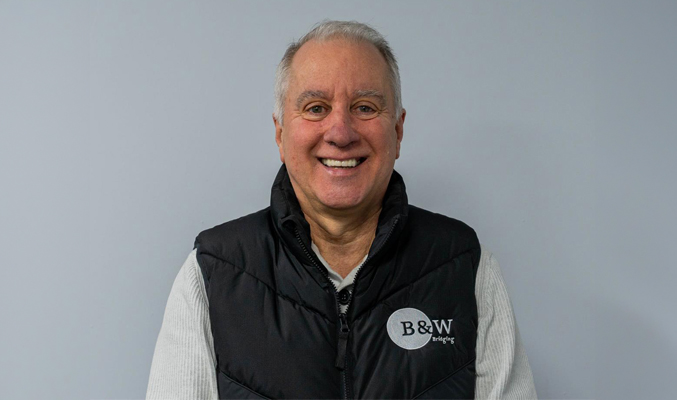Big Interview: Tiba Raja, Executive Director, Market Financial Solutions
By David Craik

BLD asks the leaders in the bridging sector to look back at 2021 and look forward to 2022. What opportunities and challenges lie in store?
If you want a visual illustration of how good 2021 has been to bridging lender Market Financial Solutions (MFS) then take a trip to the well-heeled environs of Mayfair, London.
The group opened its new, fully owned offices there at the beginning of 2021 with plenty of space to grow into, explains executive director Tiba Raja. Twelve months on and it’s bustling.
“We made sure there was enough room for additional staff that we were hoping to employ,” says Raja. “I am happy to say that the whole of the building is now full! We’ve had a very busy, hectic, crazy year with loan demand going up considerably. We have therefore needed to employ more underwriters and business development managers to meet it. Overall, we have recorded a 100% growth in staff numbers to 55 over the course of the year. If you think that 18 months ago, we only had one BDM and now we have nine; that is some increase.”
There has also been a rise in the number of products MFS offers. One example is its Large Bridging Loan product, which offers fast finance for borrowers who need bridging loans from £4million to £30million with rates starting from 0.59% and for loan-to-value of up to 75%. Loans over £30million may also be accepted at its underwriter’s discretion.
It has also updated some of its historic products, to keep up with borrower demand. For example, its Permitted and Light Development Bridging Loan which offers loans between £100,000 and £20million from rates of 0.69% and a loan-to-value of up to 75%.
“This is part of a new strategy to break down our offerings to make it easier for people to identify what they need from us. The Permitted is a good solution given the recent relaxation in planning permission policies from the Government,” Raja explains. “We have also created a new Developer Exit loan that provides finance up to £30million. We don’t do development loans but if a property developer is coming out of a loan from elsewhere and needs to bridge for a short period, they can do this with us. It is actually a cheaper option for them to bridge and it has proven quite popular.”
Another new offering was the 75-cubed scheme designed to fast-track residential property deals valued up to £2million. Offering a loan-to-value of 75%, an interest rate of 0.75% and backed by a £75million funding line it was targeted at buyers wanting to quickly take advantage of the soaring UK housing market.
“It went very well, and we managed to deploy the funds pretty quickly,” Raja says. “It saw huge interest. In fact, we had to top it up by £50million.”
The group also launched a pilot buy-to-let mortgage offering suitable for clients in complex situations be they in corporate or offshore structures, Trusts or Foreign Nationals. It also lends to a range of strong yielding property types such as very large HMOs or multi-unit blocks through to holiday lets.
“These are unregulated mortgages, so they are quicker to deploy. We can do it as fast as a bridging loan as it comes from our own funds,” says Raja. “The pilot with about 17 brokers has gone really well. We have had £100million worth of enquiries to date and we are now launching it in January sometime to the wider market.”
Raja says the combination of its own innovations, industry changes and the progress of the residential market this year have been the key drivers behind its success.
“The Stamp Duty holiday did make a difference as did the fact that during lockdown some other bridging companies were not able to deploy their funds. As a result, a lot of brokers were let down as funding lines were retracted or put on hold,” Raja states. “In contrast we were able to deliver because we have several funding lines such as investment banks, hedge funds, private offices, UHNWIs and our own funds. Having that funding gave us the confidence that we could do more, rather than reducing our loans to value as some other bridging lenders did. A lot of brokers who came to us during this period have stayed.”
MFS has also seen a slight increase in demand for commercial and semi-commercial this year. Its deals include a £6.6million bridging loan for a client to buy a shopping centre in the Northwest of England.
“Some lenders have been cautious around commercial this year, but it is picking up,” says Raja. “There are a lot of vacant commercial assets at the moment and those developers who have money are coming back and tapping into the market. They are thinking ahead, judging that the market is not going to be down forever. By the middle of next year there will be a lot more activity in commercial such as retail and offices – with some of those units converting into residential.”
She adds that MFS is hoping to bring in new products for commercial and semi-commercial next year to take advantage of that growth.
“We may even extend our new BTL mortgage product to include commercial next year. Who knows? We might diversify those products in the second or third quarter,” Raja says.
She is also looking for some extra help from the legal profession next year.
“Many lenders will criticise solicitors, having to push and encourage them to process loans quickly enough. We constantly review our panel to ensure that we all have the same priorities for our clients. This way, we know our solicitors are as committed as we are, to delivering in a timely manner for our customers. Our underwriters also work closely on each case with them to assist where they can,” she states. “As long as you are on top of it then it works but if you take your foot off the pedal then nothing moves!”
Overall, Raja is confident about another successful year in 2022 both in residential and commercial and its new BTL offering.
“In terms of bridging we are securing more funding meaning we will hopefully have more money to deploy into the market next year and increase our loan book,” she says. “Our main objective is BTL as we are investing heavily there in money and resources. We really want to help support those rentally challenged landlords who have really suffered a lot over the last two years. They have been at a disadvantage.”
MFS has already recruited a dedicated team for its BTL roll-out.
“It is all about recruiting the right people. We are constantly interviewing,” she explains. “Aside from BTL we also want to achieve more of a national presence generally. We are known for being more Southeast and London focused so our challenge is to reach out more to the Midlands and the North of England. We want our BDMs, our foot soldiers, to help us grow our influence. We have the knowledge, products and liquidity to do big ticket large loans anywhere in England and Wales.”
More staff and success may also keep Mayfair estate agents busy in the year ahead. “We may have to rent again to get even more space,” says Raja. “It is a nice headache to have!”

David Craik is a freelance journalist writing news, feature articles, blogs and guides for national newspapers and magazines. His main areas of interest include finance, property and investments.










You must be logged in to post a comment.